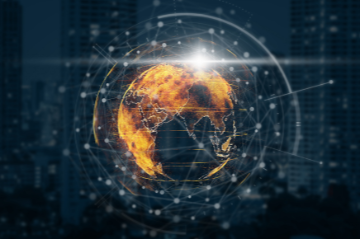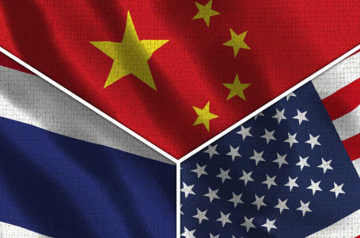People have thought in the past that a three-party system can achieve maximum stability in Pakistan. Observers will be keen to look at how the Pakistani military will be factored into the new dynamic.

Various interesting observations came up during a panel discussion on the ‘2018 Pakistan Elections: Results and Implications,’ held on 27 July 2018, at Observer Research Foundation, Delhi. The purpose of the discussion was to analyse the likely implications of the election results, not just for Pakistan, but also for India. The panel consisted of T.C.A. Raghavan, former Indian High Commissioner to Pakistan, Ashok K. Behuria, Senior Fellow and Coordinator, South Asia Centre, IDSA, Rana Banerji, former Special Secretary in Cabinet Secretariat of Government of India and Sushant Sareen, Senior Fellow, ORF.
One significant observation was that the extremist religious and right-wing parties in Pakistan, contrary to the claims that extremist parties had been routed in the 2018 polls, put up a strong showing. The Tehreek-e- Labaik Pakistan (TLP), which is an extreme religious party, has emerged as the third largest party in Punjab province. There is a glaring difference between their vote share and that of the winner’s, but specifically in terms of ranking, the party is number three in terms of the total votes polled. What is equally significant is that they have got support from across Punjab and also from the financial capital, Karachi.
Pakistan’s Peoples Party (PPP) was reduced to virtually a non-entity in the Punjab province. The party may have attained five seats from South Punjab, but those are traditional seats where the party had very strong candidates with their own following. In central and north Punjab, in most constituencies, the number of votes the party received were in the low thousands.
The PTI’s performance has been quite strong. While it is true there has been some ‘shifting of the furniture’ to help the PTI, the election still had to be fought and won. Another striking point about the results of this election is that three main parties have emerged and have obtained a much larger share of the National Assembly seats. There has been a decimation of smaller parties beginning with the Muttahida Majlis-e-Amal (MMA), Awami National Party (ANP) and to some extent the Muttahida Qaumi Movement (MQM). Also, the space for independents has been squeezed – their numbers were about half of the 2013 elections.
Thus the question: Is Pakistan moving towards a more stable three party system?
People have thought in the past that a three-party system can achieve maximum stability in Pakistan. Observers will be keen to look at how the Pakistani military will be factored into the new dynamic.
There was a view that caution must be maintained in bracketing all religious parties as equally radical. The Tehreek-e-Labbaik Pakistan (TLP) is a new phenomenon. There is not enough information to bracket it with the Lashkar-e-Taiba (LeT), and doing so would be premature.
The important point is that for the first time since 2008, Pakistan will have a civilian government, which has a cordial relationship with the military. It may not last for a long time as diarchies have a history of being prone to internal conflict.
Another aspect to keep track of, now that the results are over, is Nawaz Sharif’s imprisonment. The pattern for Pakistan is that leaders who are unpopular are either not accepted electorally or go into exile. A charismatic leader in jail is a new factor. How this situation will be handled, coupled with the civilian government which has a good relationship with the military, will define the contours of Pakistan politics in the near future.
The MQM has been decimated in Karachi due to the split in the MQM between the MQM-Pakistan and the Pak Sarzameen Party. There was also divisions within the MQM-Pakistan between the Bahadurabad faction and the PIB faction. The MQM now faces the problem of re-establishing its dominance in Karachi. For now, it remains to be seen whether MQM will be cooperative or be obstructionists.
Imran Khan is the only contestant who won from all the five seats contested. Which four seats will he give up? Will Imran retain Lahore to make a point that he defeated the PMLN in Punjab, in their heartland, or Karachi because he needs to sustain the PTI’s promise of restoring Karachi to its former glory?
There will be many contentious issues and challenges for Imran Khan. Formulating a coherent foreign policy and economic reforms will possibly be the two most important issues confronting him immediately. When looking at the internal factors, how Imran’s government deals with victimisation would be very important in his settling down process. Given his proclivity of U-turns, his ability to implement tough policy decisions will have to be seen. The debate around the 18th amendment is another looming issue. The army may want him to politically go for a reversal of the 18th amendment as it gives too much power to the provinces. It may be opposed by political parties like the PMLN, PPP and other smaller parties.
Imran, overall, has revealed an anti-India approach when pushed to a corner. He said that there can be no expectation of progress as long as the Modi government is still in power. On terrorism and use of the asymmetric option, he has stated that India blames Pakistan all too often, and that there should be a peaceful approach to resolving outstanding issues. In the past, he has been known to support the Taliban, and has made some radical statements against the United States as well. It is for this reason that India should not have too many expectations of the new establishment in Pakistan and at the same time not be casual on the question of peace through dialogue.
This report was prepared by Anirudh Bhatnagar, Research Intern, Observer Research Foundation, Delhi.
The views expressed above belong to the author(s). ORF research and analyses now available on Telegram! Click here to access our curated content — blogs, longforms and interviews.




 PREV
PREV

